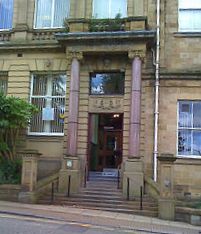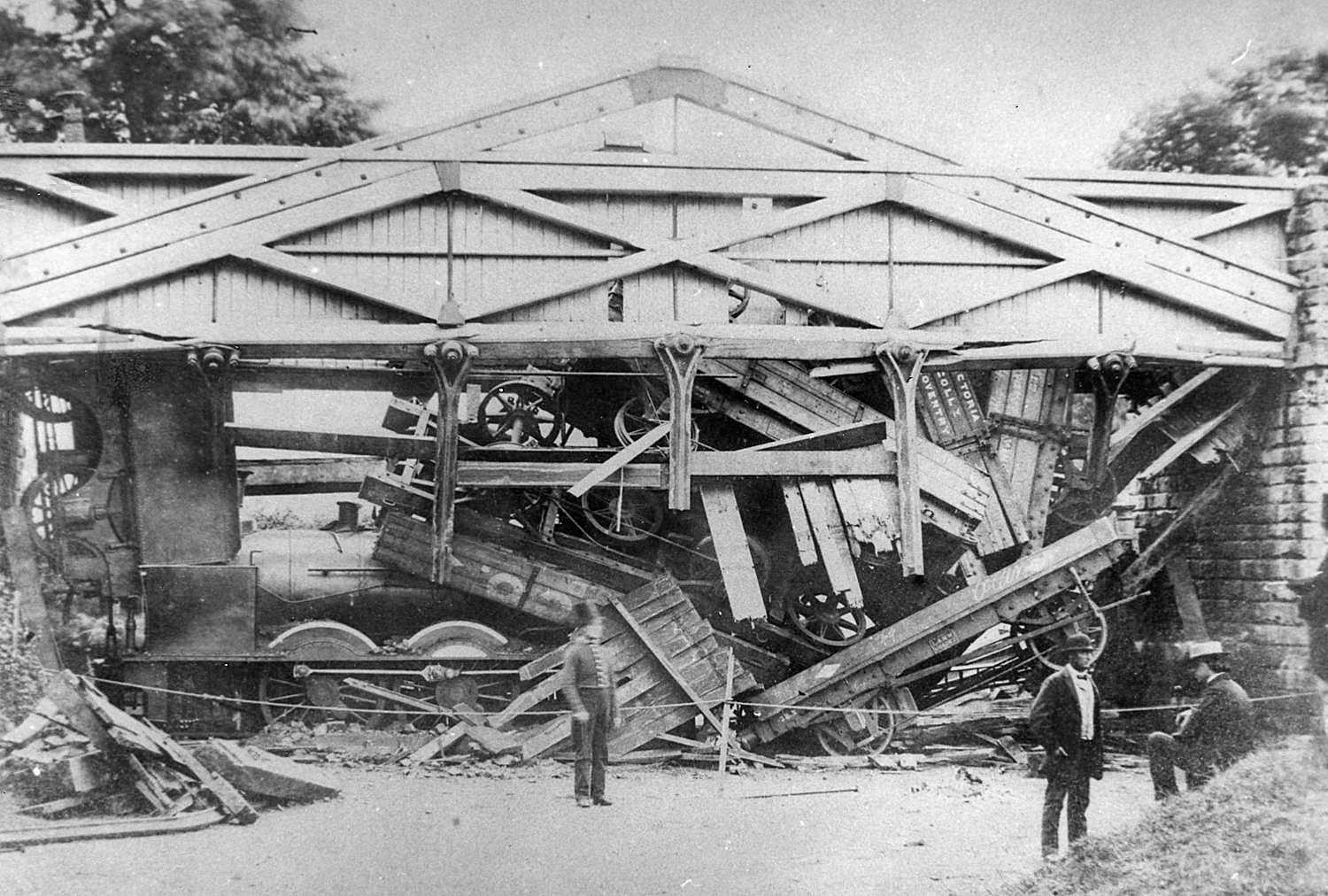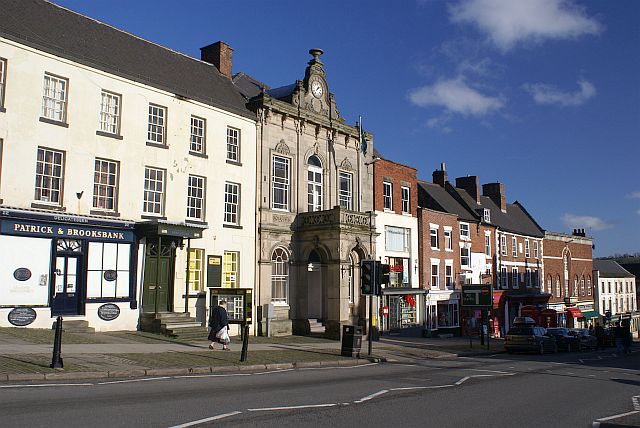|
Ashby And Nuneaton Joint Railway
The Ashby and Nuneaton Joint Railway was a pre-grouping railway company in the English Midlands, built to serve the Leicestershire coalfield. Both the Midland Railway and the London and North Western Railway (LNWR) wished to build a line on similar alignments, and they agreed to build jointly. Construction began in 1869 and the railway was opened in 1873. It linked Moira (near Ashby-de-la-Zouch) and Coalville with Nuneaton. Mineral traffic was busy, and the line formed a useful link for through goods trains. Some long distance passenger operation took place over the line, but it was never successful in carrying passengers. The LNWR sponsored the Charnwood Forest Railway which branched off the Joint Railway near Coalville and ran to a terminus at Loughborough. The intention had been to connect to the Midland Railway main line there, but that attempt was refused. The passenger traffic on the Joint Railway and the CFR ceased in 1931, and the goods activity progressively ran down f ... [...More Info...] [...Related Items...] OR: [Wikipedia] [Google] [Baidu] |
Dadlington
Dadlington is a village and former civil parish, now in the parish of Sutton Cheney, in the Hinckley and Bosworth district, in Leicestershire, England.OS Explorer Map 232 : Nuneaton & Tamworth: (1:25 000) : It is situated between Hinckley, Market Bosworth and Nuneaton. In 1931 the parish had a population of 200. The village has a population of around 301 and contains a 13th-century church (St. James), a pub (the Dog and Hedgehog) and a hotel (the Ambion Court). The Ashby-de-la-Zouch Canal runs through the village. History The village's name means 'farm/settlement of Daedela'. Dadlington became a parish in 1866, on 1 April 1935 the parish was abolished and merged with Sutton Cheney. A silver gilt white boar, Richard III's own badge, given in large numbers to his supporters, was discovered at Fen Hole outside Dadlington in 2010. There is a theory that the Battle of Bosworth took place at Dadlington, not at Ambion Hill.https://www.academia.edu/6190542/Finding_Bosworth_Battlefie ... [...More Info...] [...Related Items...] OR: [Wikipedia] [Google] [Baidu] |
Market Bosworth
Market Bosworth is a market town and civil parish in western Leicestershire, England. At the 2001 Census, it had a population of 1,906, increasing to 2,097 at the 2011 census. It is most famously near to the site of the decisive final battle of the Wars of the Roses. In 1974, Market Bosworth Rural District merged with Hinckley Rural District to form the district of Hinckley and Bosworth. Although the town is in Leicestershire, its postal address is Nuneaton, Warwickshire and postal area code CV13. History The town's historic cattle market closed in 1996. Building work here and at other sites has revealed evidence of a settlement on the hill since the Bronze Age. Remains of a Roman villa have been found on the east side of Barton Road. Bosworth as an Anglo-Saxon village dates from the 8th century. Before the Norman Conquest of 1066, there were two manors at Bosworth one belonging to an Anglo-Saxon knight named Fernot, and some sokemen. Following the Norman conquest, as recor ... [...More Info...] [...Related Items...] OR: [Wikipedia] [Google] [Baidu] |
Accrington
Accrington is a town in the Hyndburn borough of Lancashire, England. It lies about east of Blackburn, west of Burnley, east of Preston, north of Manchester and is situated on the culverted River Hyndburn. Commonly abbreviated by locals to "Accy", the town has a population of 35,456 according to the 2011 census. Accrington is a former centre of the cotton and textile machinery industries. The town is famed for manufacturing the hardest and densest building bricks in the world, "The Accrington NORI" (iron), which were used in the construction of the Empire State Building and for the foundations of Blackpool Tower; famous for Accrington Stanley F.C. and the Haworth Art Gallery which holds Europe's largest collection of Tiffany glass. History Origin of the name The name Accrington appears to be Anglo-Saxon in origin. The earliest citing appears in the Parish of Whalley records of 850; where it is written ''Akeringastun''. In later records, the name variously appears as ''Ak ... [...More Info...] [...Related Items...] OR: [Wikipedia] [Google] [Baidu] |
London Midland And Scottish Railway
The London, Midland and Scottish Railway (LMSIt has been argued that the initials LMSR should be used to be consistent with LNER, GWR and SR. The London, Midland and Scottish Railway's corporate image used LMS, and this is what is generally used in historical circles. The LMS occasionally also used the initials LM&SR. For consistency, this article uses the initials LMS.) was a British railway company. It was formed on 1 January 1923 under the Railways Act of 1921, which required the grouping of over 120 separate railways into four. The companies merged into the LMS included the London and North Western Railway, Midland Railway, the Lancashire and Yorkshire Railway (which had previously merged with the London and North Western Railway on 1 January 1922), several Scottish railway companies (including the Caledonian Railway), and numerous other, smaller ventures. Besides being the world's largest transport organisation, the company was also the largest commercial enterpri ... [...More Info...] [...Related Items...] OR: [Wikipedia] [Google] [Baidu] |
Railways Act 1921
The Railways Act 1921 (c. 55), also known as the Grouping Act, was an Act of Parliament enacted by the British government and intended to stem the losses being made by many of the country's 120 railway companies, by "grouping" them into four large companies dubbed the " Big Four". This was intended to move the railways away from internal competition, and retain some of the benefits which the country had derived from a government-controlled railway during and after the Great War of 1914–1918. The provisions of the Act took effect from the start of 1923. History The British railway system had been built up by more than a hundred railway companies, large and small, and often, particularly locally, in competition with each other. The parallel railways of the East Midlands and the rivalry between the South Eastern Railway and the London, Brighton and South Coast Railway at Hastings were two examples of such local competition. During the First World War the railways were under st ... [...More Info...] [...Related Items...] OR: [Wikipedia] [Google] [Baidu] |
Board Of Trade
The Board of Trade is a British government body concerned with commerce and industry, currently within the Department for International Trade. Its full title is The Lords of the Committee of the Privy Council appointed for the consideration of all matters relating to Trade and Foreign Plantations, but is commonly known as the Board of Trade, and formerly known as the Lords of Trade and Plantations or Lords of Trade, and it has been a committee of the Privy Council of the United Kingdom. The board has gone through several evolutions, beginning with extensive involvement in colonial matters in the 17th century, to powerful regulatory functions in the Victorian Era and early 20th century. It was virtually dormant in the last third of 20th century. In 2017, it was revitalised as an advisory board headed by the International Trade Secretary who has nominally held the title of President of the Board of Trade, and who at present is the only privy counsellor of the board, the other m ... [...More Info...] [...Related Items...] OR: [Wikipedia] [Google] [Baidu] |
Henry Tyler (Conservative Politician)
Sir Henry Whatley Tyler (7 March 1827 – 30 January 1908) was a pioneering British engineer and politician, who contributed to the Great Exhibition of 1851 and whose collections helped found the Science Museum in South Kensington. His interests were mainly in railways, where he served Inspector of Railways and a railway company director but also in water and iron working. He was also a Conservative politician who sat in the House of Commons from 1880 to 1892. Early life Tyler was born in Mayfair, London, the son of John Chatfield Tyler and attended the Royal Military Academy Woolwich. He received a commission as a Second Lieutenant in the Royal Engineers on 19 December 1844, having previously been a Gentleman Cadet; he was promoted to First Lieutenant on 1 April 1846; and to Second Captain on 31 March 1854. In 1851 he was a lieutenant called upon by Henry Cole to assist with the organisation of the Great Exhibition. In 1860 he donated a set of prospectuses to the State Library ... [...More Info...] [...Related Items...] OR: [Wikipedia] [Google] [Baidu] |
World War I
World War I (28 July 1914 11 November 1918), often abbreviated as WWI, was one of the deadliest global conflicts in history. Belligerents included much of Europe, the Russian Empire, the United States, and the Ottoman Empire, with fighting occurring throughout Europe, the Middle East, Africa, the Pacific, and parts of Asia. An estimated 9 million soldiers were killed in combat, plus another 23 million wounded, while 5 million civilians died as a result of military action, hunger, and disease. Millions more died in genocides within the Ottoman Empire and in the 1918 influenza pandemic, which was exacerbated by the movement of combatants during the war. Prior to 1914, the European great powers were divided between the Triple Entente (comprising France, Russia, and Britain) and the Triple Alliance (containing Germany, Austria-Hungary, and Italy). Tensions in the Balkans came to a head on 28 June 1914, following the assassination of Archduke Franz Ferdin ... [...More Info...] [...Related Items...] OR: [Wikipedia] [Google] [Baidu] |
Ashbourne, Derbyshire
Ashbourne is a market town in the Derbyshire Dales district in Derbyshire, England. Its population was measured at 8,377 in the 2011 census and was estimated to have grown to 9,163 by 2019. It has many historical buildings and independent shops. The town offers a historic annual Shrovetide football match. Its position near the southern edge of the Peak District makes it the closest town to Dovedale, to which Ashbourne is sometimes referred to as the gateway. The town is west of Derby, south-east of Buxton, east of Stoke-on-Trent, south-south-east of Manchester, south-west of Sheffield and north of Lichfield. Nearby towns include Matlock, Uttoxeter, Leek, Cheadle and Bakewell. History The town's name derives from the Old English ''æsc-burna'' meaning "stream with ash trees". Ashbourne was granted a market charter in 1257. In medieval times it was a frequent rest stop for pilgrims walking "St Non's Way" to the shrine of Saint Fremund at Dunstable in Bedfordshire. T ... [...More Info...] [...Related Items...] OR: [Wikipedia] [Google] [Baidu] |
Ashbourne Line
The Ashbourne line was a railway from Buxton via Ashbourne to Uttoxeter. It was built by the London and North Western Railway using a section of the Cromford and High Peak Railway (C&HPR) and it joined the North Staffordshire Railway at Ashbourne, proceeding to Uttoxeter with a junction onto the main line at Rocester. Origins Although the country between Buxton and Ashbourne was sparsely populated, and the terrain immensely difficult, there were a number of motivations for its construction. Ashbourne was one of the few large settlements in the area without a railway connection until the North Staffordshire Railway built its branch from the Churnet Valley line in 1852. Meanwhile, a lucrative trade in limestone was building up and the LNWR's only route southwards was through the Manchester area. Finally, and not least, the Midland Railway was threatening to take over the Derbyshire business through its attempts to reach Manchester from Derby via Buxton. The LNWR sought to con ... [...More Info...] [...Related Items...] OR: [Wikipedia] [Google] [Baidu] |
Macclesfield
Macclesfield is a market town and civil parish in the unitary authority of Cheshire East in Cheshire, England. It is located on the River Bollin in the east of the county, on the edge of the Cheshire Plain, with Macclesfield Forest to its east; it is south of Manchester and east of Chester. Before the Norman Conquest, Macclesfield was held by Edwin, Earl of Mercia and was assessed at £8. The manor is recorded in the ''Domesday Book'' as "Maclesfeld", meaning "Maccel's open country". The medieval town grew up on the hilltop around what is now St Michael's Church. It was granted a charter by Edward I in 1261, before he became king. Macclesfield Grammar School was founded in 1502. The town had a silk-button industry from at least the middle of the 17th century and became a major silk-manufacturing centre from the mid-18th century. The Macclesfield Canal was constructed in 1826–31. Hovis breadmakers were another Victorian employer. Modern industries include pharmace ... [...More Info...] [...Related Items...] OR: [Wikipedia] [Google] [Baidu] |
Leek, Staffordshire
Leek is a market town and civil parishes in England, civil parish in the county of Staffordshire, England, on the River Churnet. It is situated about north east of Stoke-on-Trent. It is an ancient borough and was granted its royal charter in 1214. It is the administrative centre for the Staffordshire Moorlands District Council. John of England, King John granted Ranulph de Blondeville, 6th Earl of Chester, the right to hold a weekly Wednesday market and an annual seven-day fair in Leek in 1207. Leek's coat of arms is made up of a saltire shield. On the top is the Stafford knot, either side is the Leek double sunset and below a gold garb. The crest is a mural crown with three mulberry leaves on a mount of heather on top of which a Red grouse, moorcock is resting his claw on a small-weave shuttle. The motto translates to: Our skill assisting us, we have no cause for despair. Economy The town had a regular cattle market for hundreds of years, reflecting its role as a centre of ... [...More Info...] [...Related Items...] OR: [Wikipedia] [Google] [Baidu] |







